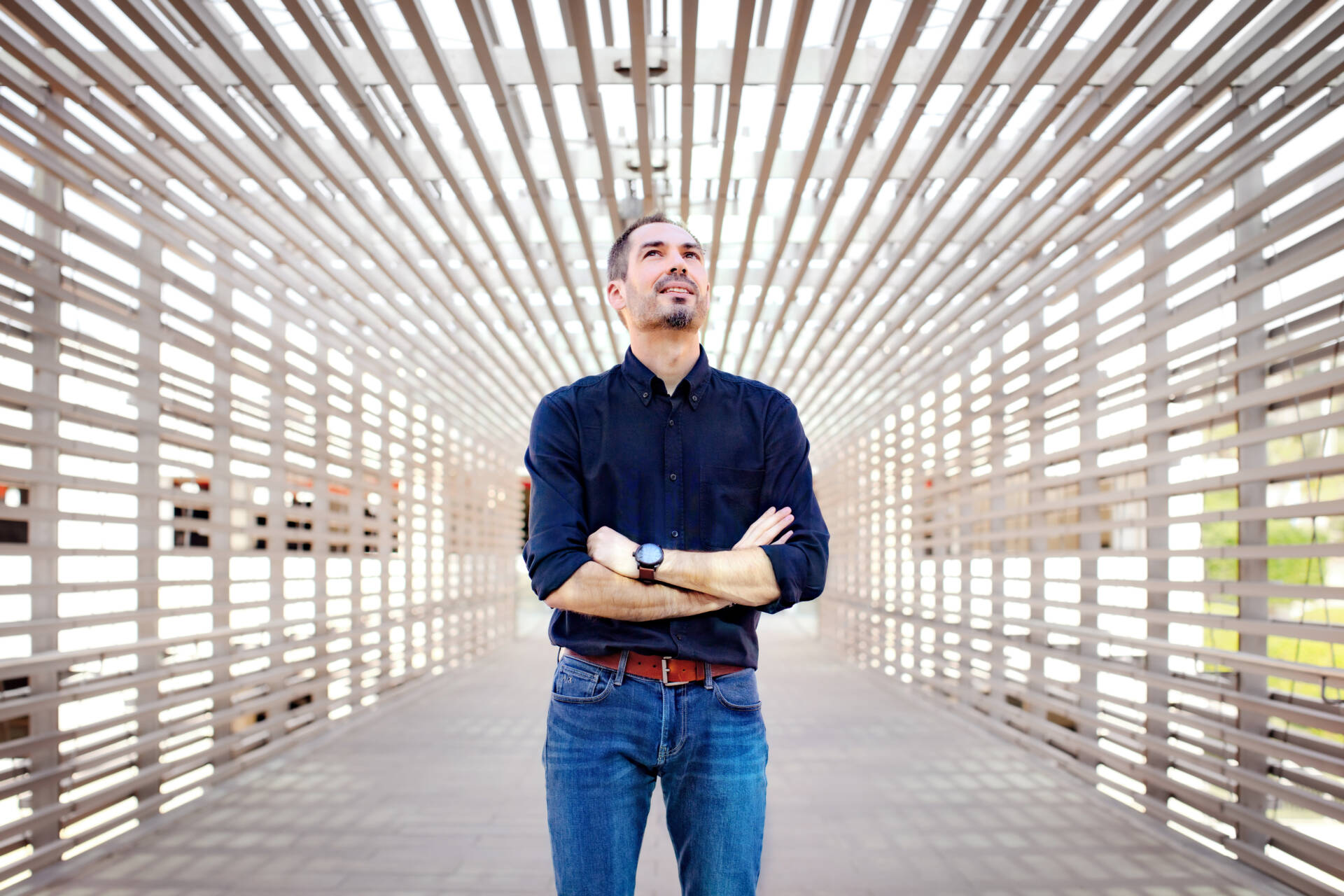In this photograph I am standing on the bridge that I cross to and from the lab each day. I find this place incredibly beautiful. It is just pieces of concrete but assembled in a way that speaks to me.
I am a research scientist in the group of Mohamed Eddaoudi. We specialize in designing and making porous materials called metal-organic frameworks (MOFs), which have many potential uses, ranging from carbon capture to fuel tanks for hydrogen vehicles.
Eddaoudi’s vision is not to make these materials by trial and error, but to understand the fundamentals of their assembly. Once we understand that, we can design MOFs to have specific properties that can be fine-tuned on demand.
I see myself as a molecular architect. I loved studying mathematics and geometry, and I am happy that I can apply geometry principles in chemistry to design new MOFs. I like to be at the interface — having creativity while also being forced to consider what is feasible chemically.
When I first joined KAUST in 2011 as a postdoc, the Eddaoudi group was working on a “cuboctahedral” MOF building block that had only two predicted ways of assembly. You could link them with linear organic molecules or square molecules.
Other colleagues were already working on those, so I decided to swim against the current. There was no prediction for assembling these with triangles. I decided to try, and we discovered a novel MOF linker – a cluster with the highest connectivity ever observed in the field.
When I continued looking, I found a metal organic cage with the same shape as the cluster I had discovered. I wondered: could we replace the dense cluster with this porous cage? And it worked! To us, that was the missing proof to demonstrate to the scientific community that it is possible to make these materials by design.
In 2014, I finished my postdoctoral project and left KAUST, bound for Barcelona. But in 2019 Eddaoudi invited me back. As a research scientist, I now mentor postdocs and Ph.D. students that work at the lab bench. My approach is to put a lot of thinking into what we want to make and give my designs to the Ph.D. students and postdocs when I am confident that they will work.
I didn’t make my career as an artist, but I really like architecture and photography. The pattern of the shadows on the floor of the bridge is different depending on the time of day. But of course you cannot capture this with a single photo because a photo only captures one moment in time. I have walked this bridge hundreds of times and still discover new things about it. It combines architecture and the possibility of nice photography — it is like traveling through a porous channel on my daily commute to work. It brings together many pieces that make me who I am.

